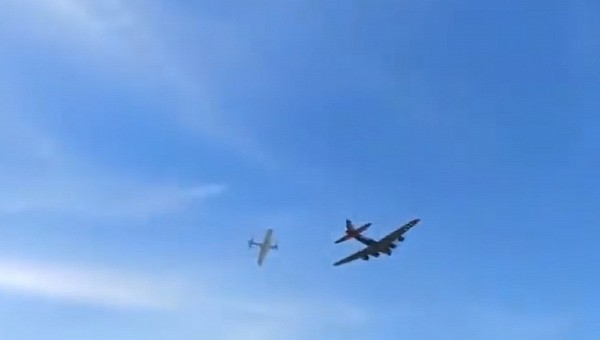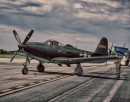It's always a sad day to see one of the glorious WWII aircraft disappear or be destroyed. But November 12, 2022, will be remembered as one of the dark days when not one but two such aircraft were downed forever. During the Wings Over Dallas Airshow, a B-17 Flying Fortress and a Bell P-63 Kingcobra collided mid-air.
It was a sunny afternoon at Dallas Executive Airport in Texas, and people were watching the sky, staring at the mighty birds of WWII. And then, at around 1:20 pm, disaster struck. During a fly-over maneuver, a B-17 bomber was hit by a Bell P-63 Kingcobra. The pilot from the latter aircraft tried to avoid the crash by pulling the helm at the last moment, but it was too late. The left wing of the Bell hit the mid-section of the Flying Fortress. Sadly, both planes were completely destroyed and the crews are believed lost.
B-17 Flying Fortress is one of the most famous bombers that took the sky in WWII. Its career began in 1935, and it was on active duty in various armies of the world until 1968. There were more than 12,000 units produced, and most of them were lost between 1941 and 1945. Their active role in combat was noticeable. It was the aircraft that dropped the most bombs on Nazi Germany, and at the beginning of November this year, there were only eight airworthy B-17s left in the world. The aircraft had a crew of ten, including the gunners.
Bell P-63 Kingcobra entered service in 1943, but the U.S. Army Air Forces didn't accept it to enter combat. Yet, the aircraft served in the Soviet Air Forces, where it proved its value. It was part of the land-lease agreement that helped the U.S.S.R. play a decisive role in defeating Nazi Germany during WWII. The Kingcobra was powered by a V12 Allison V-1710-117 engine that was good for 1,800 HP. Its maximum speed of 410 mph (660 kph) was respectable for those times. It was produced in about 3,300 units.
At the time of writing, there are no details regarding casualties.
B-17 Flying Fortress is one of the most famous bombers that took the sky in WWII. Its career began in 1935, and it was on active duty in various armies of the world until 1968. There were more than 12,000 units produced, and most of them were lost between 1941 and 1945. Their active role in combat was noticeable. It was the aircraft that dropped the most bombs on Nazi Germany, and at the beginning of November this year, there were only eight airworthy B-17s left in the world. The aircraft had a crew of ten, including the gunners.
Bell P-63 Kingcobra entered service in 1943, but the U.S. Army Air Forces didn't accept it to enter combat. Yet, the aircraft served in the Soviet Air Forces, where it proved its value. It was part of the land-lease agreement that helped the U.S.S.R. play a decisive role in defeating Nazi Germany during WWII. The Kingcobra was powered by a V12 Allison V-1710-117 engine that was good for 1,800 HP. Its maximum speed of 410 mph (660 kph) was respectable for those times. It was produced in about 3,300 units.
At the time of writing, there are no details regarding casualties.
A mid-air collision involving two planes near the Dallas Executive Airport, today. The accident took place during the Wings Over Dallas WWII Airshow at 1:25 p.m., according to Dallas Fire-Rescue. + 1??? pic.twitter.com/up2Y39rv8c
— Branislav Pipovi? (@BranaPipovic) November 12, 2022







